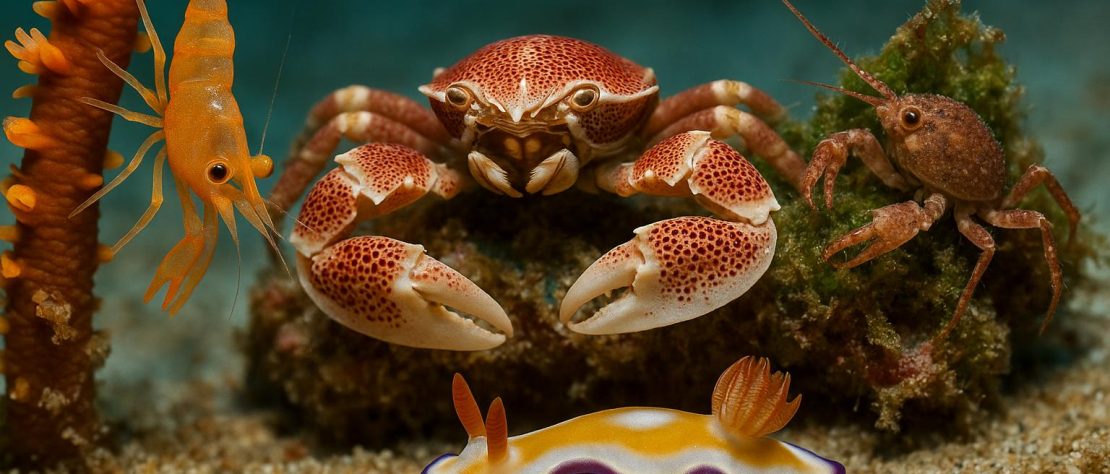The Biodiversity of Dauin, Dumaguete
Nestled along the coastline of Negros Oriental in the Philippines, Dauin, Dumaguete is a destination that has become synonymous with marine biodiversity. Not only is it celebrated for its stunning beaches and dive sites, but also for its unique fauna, which draws biologists and nature enthusiasts to its shores.
Marine Life in Dauin
Dauin is renowned for its rich underwater ecosystem. Divers frequently encounter species that are rare in other parts of the world, making it a hotspot for underwater photography and marine exploration. The area is noted for its vibrant coral reefs and the array of marine life it supports.
Sea Slugs and Nudibranchs
One of the most intriguing groups of creatures found in Dauin are the sea slugs and nudibranchs. These soft-bodied mollusks are often vibrantly colored and come in a variety of shapes. They play a significant role in marine ecosystems as they feed on sponges, hydroids, and other organisms, thus contributing to maintaining the ecological balance. For those interested in learning more, resources such as marine research websites provide detailed insights into these fascinating creatures.
Frogfish
Dauin is also home to an unusual resident: the frogfish. Known for their unique capacity to camouflage, frogfish can be challenging to spot, but they are a delight to observe in their natural habitat. Scuba divers visiting Dauin often report exciting encounters with these masters of disguise. These fish are an excellent subject for biologists studying adaptive evolutionary traits.
Conservation Efforts
There have been several local and international efforts aimed at conserving Dauin’s rich marine life. Conservation programs focus on maintaining the health of coral reefs and protecting endangered species. Local organizations often work in collaboration with international institutes to develop strategies that ensure sustainable tourism while enhancing ecological protection.
Marine Protected Areas (MPAs)
MPAs around Dauin play a crucial role in safeguarding its unique marine species. These areas restrict human activities to prevent overfishing and habitat destruction. Studies show that such protected environments support a higher biodiversity, offering a safe haven for many rare and endemic species.
Research and Education
Ongoing research and educational initiatives are crucial to understanding and preserving Dauin’s ecosystems. Collaborative projects between universities and environmental groups help to monitor and document biodiversity, which can be vital for future conservation strategies. Engaging local communities through education helps in raising awareness about the importance of conserving these habitats.
Conclusion
Dauin, Dumaguete remains one of the Philippines’ hidden gems due to its unique and rare marine life. The continued efforts in research and conservation are vital to preserving the diverse and vibrant ecosystems found here. Through sustainable practices and increased awareness, Dauin can maintain its status as a sanctuary for these rare critters, ensuring that future generations can also appreciate its natural wonders.
For further reading on marine biodiversity in the Philippines, some online educational platforms offer detailed research findings and local conservation strategies.
Exploring Terrestrial Biodiversity
While Dauin is celebrated for its marine life, the region’s terrestrial ecosystems are equally fascinating. The interaction between land and sea ecosystems provides intricate webs of life that are critical for ecological balance.
Tropical Flora
The lush vegetation of Dauin is characteristic of the tropical climate of the Philippines. The area is home to a variety of flowering plants, ferns, and trees that create a diverse habitat on land. These plants not only supply oxygen but also provide shelter and food for a range of terrestrial creatures, contributing to ecosystem balance.
Coastal and Inland Plants
The coastal areas of Dauin are lined with mangroves and other salt-tolerant plants that protect shorelines from erosion and serve as critical habitats. Further inland, forests range from lowland areas rich in biodiversity to higher altitudes with cooler temperatures and different plant communities.
Bird Species
Dauin’s varied terrains support a diversity of bird species, some of which are endemic to the Philippines. Birdwatching enthusiasts can often spot colorful kingfishers, eagles, and other bird species. The conservation of these habitats is crucial for maintaining avian biodiversity.
Conservation Challenges
Despite the natural richness, Dauin faces several conservation challenges. Human activities, such as land conversion and pollution, threaten both marine and terrestrial environments.
Pollution Control
Efforts to control pollution are essential for safeguarding biodiversity. Local authorities are working to manage waste effectively, reducing the impact of pollution on land and sea. Volunteer programs and community involvement have been valuable in maintaining cleanliness and promoting environmental stewardship.
Habitat Restoration
Restoration projects aim to rehabilitate damaged ecosystems, especially mangroves and coral reefs, which are vital for fish nurseries and coastal protection. These initiatives often involve replanting vegetation and removing invasive species to improve habitat quality and biodiversity.
Conclusion
Recognizing the interconnectedness of terrestrial and marine ecosystems is vital for the holistic preservation of Dauin’s biodiversity. Continued research, community engagement, and sustainable practices are crucial for conserving this rich tapestry of life. As efforts to protect both land and sea continue to grow, Dauin stands as a promising model for biodiversity conservation, where people and nature coexist harmoniously.

